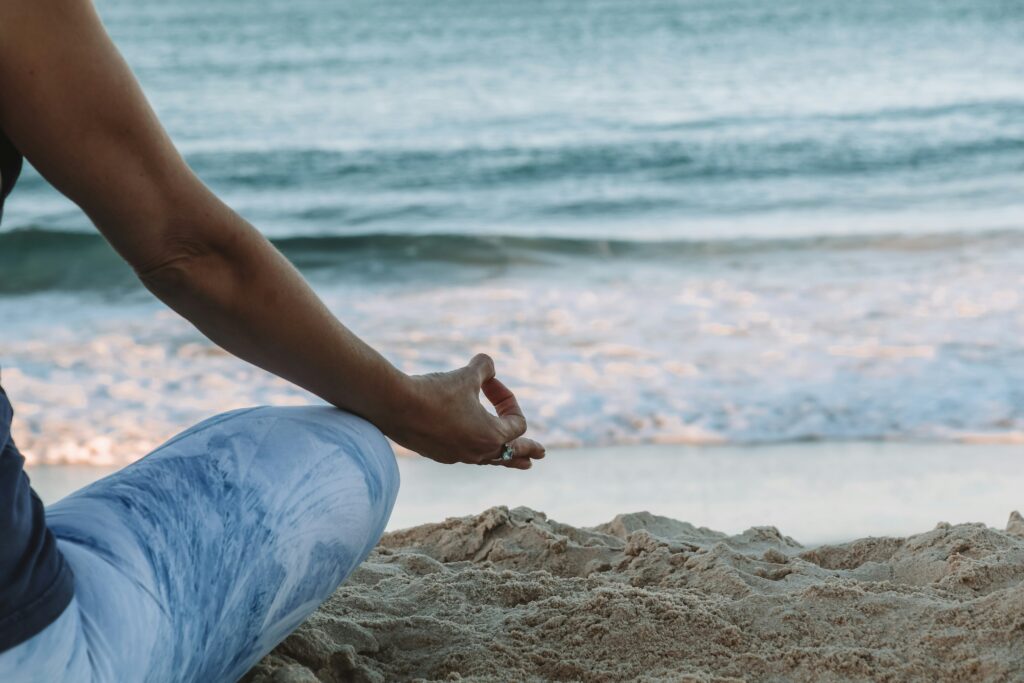
The power of breath is something that has been recognized for centuries. Rooted in yoga, meditation, and mindfulness practices, breathwork has also recently gained popularity as a transformative tool in sports and wellness.
By practicing breath holds, you can unlock surprising physical and mental benefits. Your mind is often the biggest hurdle when it comes to holding your breath, but with practice, you can build mental resilience and increase your breath-holding capacity.
From improving sleep and recovery to boosting lung capacity and enhancing your overall well-being, there are countless reasons to explore this practice. Whether you’re curious about the health benefits of holding your breath or you’re training for a sport, this guide will walk you through the benefits and how to get started.

Why Do People Hold Their Breath?
Breath holding might sound like something you’d only do underwater, but it’s a common practice in sports, yoga, and mindfulness. Freediving, swimming, and even weightlifting all involve some form of breath control.
But it’s not just about performance. Holding your breath builds inner resilience, helping you handle stress, both physical and emotional.
This goes for short or if you want to try longer breath holds. Imagine silencing the urge to breathe, staying calm and continuing to hold your breath—that kind of control has a profound effect on your mental state.
Breath holding connects you to your body on a deep level. It’s like an intense form of meditation that grounds you and fosters mindfulness.
Personally, I find breath holds—whether practiced on land or in water—a powerful way to block out distractions and feel deeply connected to myself.

Who Should Avoid Breath Holding?
While breath holding has many benefits, it’s not for everyone. Avoid practicing breath holds if you:
- Are pregnant
- Have cardiovascular issues
- Have a history of seizures or strokes
- Are on certain medications
- Have mental health conditions like bipolar disorder or schizophrenia
Safety Tip: If you’re practicing in water, always have a buddy with you. Never practice alone.
Breathwork Techniques for Breath Holding
If you’re interested in holding your breath, there are several techniques to explore, depending on your goals and preferences:
The Wim Hof Method:
This involves deep, fast breathing followed by holding your breath. Often paired with cold water immersion, it’s designed to enhance your connection to your mind and body.
Apnea Tables:
These are structured exercises to improve breath-holding.
CO₂ Tables:
Train your tolerance for carbon dioxide by reducing recovery time between breath holds.
O₂ Tables:
Increase your breath-holding duration by extending hold times while keeping recovery consistent.
Yoga Practices:
Techniques like anuloma viloma and nadi shodhana involve alternate nostril breathing with breath retention. These are beginner-friendly ways to start out. You can increase the breath retention as you progress.
Freediving Courses:
For those who want to dive deeper (literally and figuratively), freediving courses provide a comprehensive understanding of breath holding and its applications.
No matter your experience level, there’s a technique that will suit your needs.
If you are interested in finding out more about breathwork techniques or about freediving, just email me. I am a trained freedive instructor and breathwork facilitator and I would be happy to go into more detail with you.

Physical Benefits of Holding Your Breath
Holding your breath isn’t just about mental focus—it has some incredible physical benefits too:
- Increased Lung Capacity: Over time, you’ll improve how efficiently your lungs process oxygen.
- Better Cardiovascular Health: Strengthen your heart and improve circulation.
- Boosted Immunity: Studies suggest that breath-holding can help detoxify the body and support immune function.
- Improved Recovery: Breath holds can enhance muscle recovery and reduce fatigue.
- Brain Health: Breath-holding increases oxygenated blood flow to the brain, supporting cognitive function and reducing the risk of decline.
For more detailed insights, I highly recommend Patrick McKeown’s book The Oxygen Advantage, which delves into breathwork, proper breathing, and the benefits of breath holding.

Mental Benefits of Holding Your Breath
The mental aspect of holding your breath is where the real magic happens. It’s a powerful way to build resilience and train your mind to stay calm under pressure.
When you prepare to hold your breath, you lower your heart rate and focus entirely on staying relaxed. It’s like a form of meditation that leaves you feeling deeply connected to your body. Afterward, you’ll feel a flood of endorphins and dopamine, leaving you calm, centered, and energized.
For those who enjoy yoga or spiritual practices, incorporating bandhas (body locks) during breath holds can deepen meditation and expand awareness.
How to Practice Breath Holding
Here’s a simple step-by-step guide to get started with breath holding:
- Prepare with Gentle Breathing
Spend a few minutes breathing naturally, like you’re relaxing on the couch. The goal is to lower your heart rate and feel calm. - Take a Three-Part Breath
When you feel fully relaxed, like you are almost going to fall asleep then take two deep breaths. Inhale deeply, filling your belly, lungs, and upper chest. Then exhale completely. Then take another three part inhale, filling your lungs up completely. - Hold Your Breath
After your inhale, gently close your larynx, close your eyes and hold your breath. - Stay Calm
- Visualize something peaceful.
- Do a body scan to release tension.
- If the urge to breathe arises, focus on counting or your heartbeat to distract your mind.
- Recover
When ready, exhale and take a few forceful inhales and passive exhales to re-oxygenate your body. - Relax and recover
Breath normally and stay where you are with your eyes closed. Observe how you feel.
Wrap-Up
Breath holding is an amazing way to discover your physical and mental potential. From immediate benefits like feel-good hormones to long-term improvements in endurance and focus, this practice offers something for everyone.
Whether you’re looking to enhance your fitness, improve mental clarity, or simply explore a new wellness practice, holding your breath can be a simple yet powerful tool.
Start small, stay consistent, and enjoy the process of connecting with your body and mind in a whole new way.


0g2j0u
rqicgz